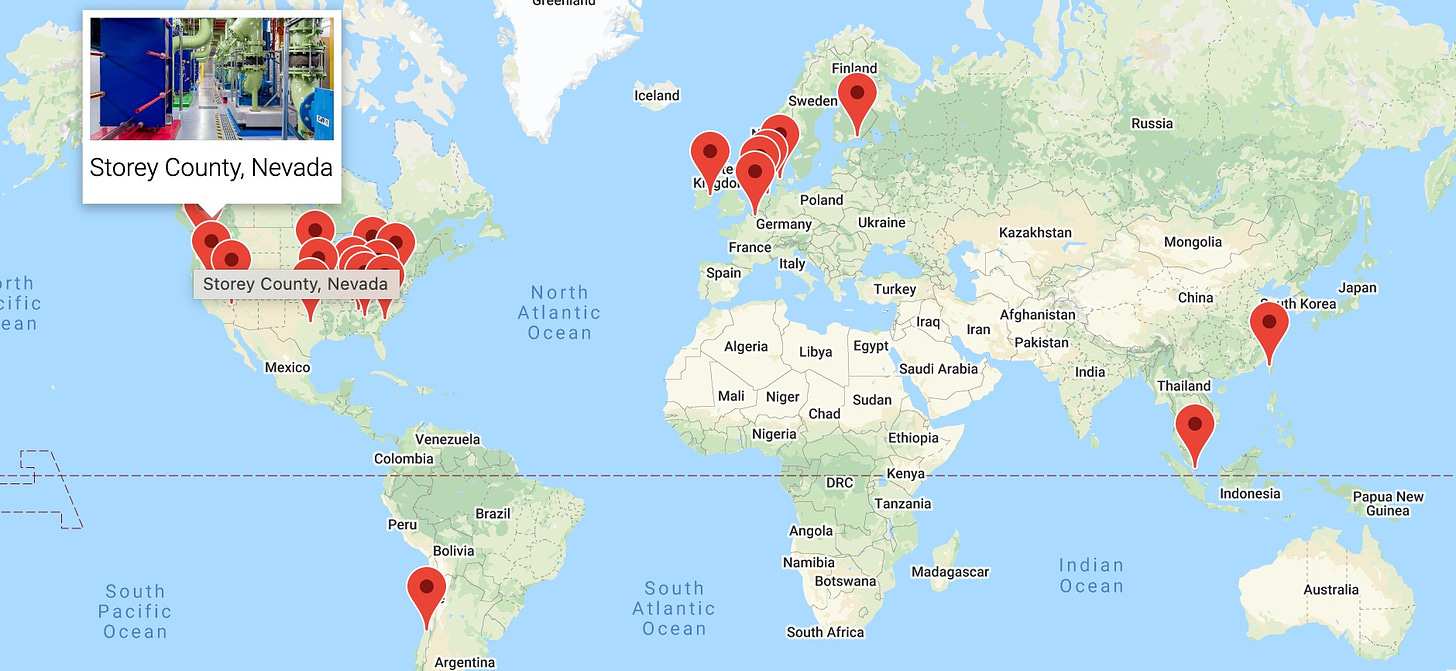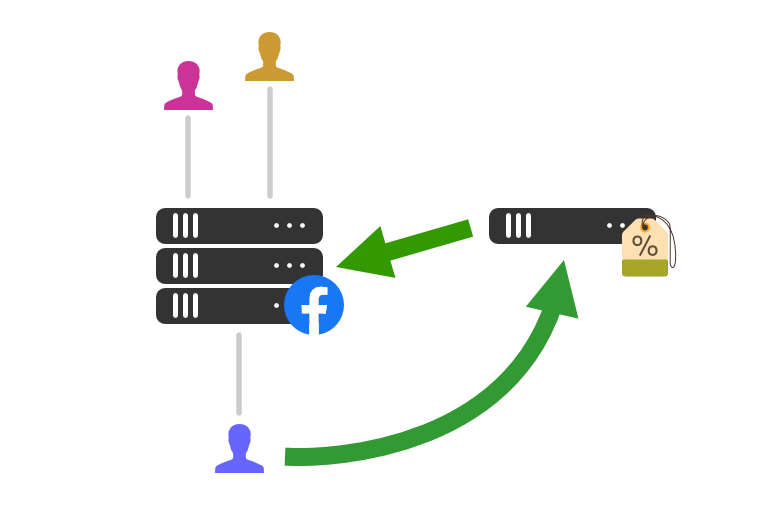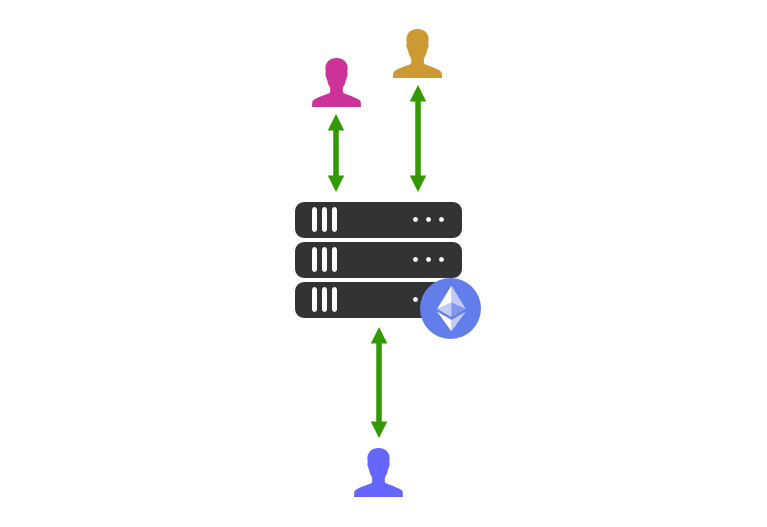Web3: the rise of the aligned web
It's coming to replace the adversarial web. Let's hope it also comes to the US.
I've had the internet talk with my kids before, but I really had it in explicit detail with my newly teenage daughter yesterday. Our discussion spanned the gamut from how split testing and conversion optimization work, to machine learning and algorithmic manipulation of the limbic system, to recommendation engines and rabbit holes, to online communities and social contagions.
What I described to her over the course of about an hour is the current status quo — what I call the adversarial web, also known as Web 2.0 or just web2. The adversarial web has characteristics we all know and hate — pervasive surveillance, fake news and disinformation (most egregiously from established media outlets and self-styled "disinfo researchers"), a moderation crisis, SPAM, advertorial, and the list goes on.
My thesis is that most, or maybe even all, of web2's negative characteristics arise from a misalignment of incentives that's ultimately rooted in the quirks of how money flows around in it.
The web that's coming — what I'm calling the aligned web, and what most crypto enthusiasts are calling web3 — fixes this.
What I told my daughter about the dangers of web2
In my conversation with my daughter about the internet, my goal was to drive three high-level points home to her, points that I think are worth unpacking because of what they indicate about the future of web3 and why it's so important.
First, I wanted her to understand that when she sits down on the living room couch and opens a browser window, she feels safe, private, and in control. But every one of those feelings is a deliberately cultivated illusion. She is not safe. Her session is not private. And she is absolutely not in control.
It's not just that her tech-savvy dad has locked down all the things at multiple levels of the stack and is keeping a periodic eye on her internet history. This is all true, but that's just the training wheels version of much a bigger online reality, which is that the moment she opens a browser and hits a page, that page loads a chain of software that's identifying her, analyzing her, and running experiments on her in order to modify her behavior in ways that may not benefit her.
The ad-driven internet of 2021 is simply not a passive archive of documents and materials that you leisurely navigate according to your natural interests and in-born inclinations. No, the modern web is best thought of as an adversary. Every nanosecond we spend on it, it's sizing us up in order to do things to us that will benefit it at our expense.
The second point I made, following on the first, was to describe web2's innate orthogonality. Web 2.0 has its own interests, agendas, metrics, and goals, and her personal and spiritual development is nowhere in that expansive picture. A given platform doesn't care if she becomes a literal actual white supremacist or a BLM activist, as long as she's hitting certain engagement and behavioral metrics. The goal is to cultivate in her a set of feelings and behaviors that support commerce, and that shape her into a biddable consumer — it is not to either destroy her morals or to build them up.
The intelligent, adaptive machinery of the ad-driven, adversarial web doesn't know about positive concepts like excellence, virtue, civic duty, truth, health, or beauty, nor does it recognize negative ones like vice, strife, indolence, ugliness, decay, or lies. It functions in an entirely different universe of abstractions (engagement, conversion, time on site, net promoter score, reach, viral coefficient, etc.) that's just totally unrelated to most of the things we're trying to teach her at her age. Web2 pursues its own agenda on its own terms, and what happens to the spiritual and physical health of her and her generation is largely irrelevant to it. It simply does not care because it wasn't even designed to.
The final thing I wanted her to understand is that all of the above is a product of a deliberate set of technical and business decisions that we made over the course of the past 30 years and that it doesn't have to be this way. In fact, her dad is right now working in the crypto space with the express goal of making some of these things better.
Instead of the ad-driven adversarial web, she and her younger sisters will one day have the option of migrating to the crypto-driven aligned web.
The aligned web will surely have its own problems, but I think web3 will have a better class of problems than web2 does. The problems will be better because the incentives are better, and the incentives are better because the architecture is better.
Why web2 is the way it is
On the adversarial web, no matter what you're doing — whether you're a media shop like the Washington Post or a highly specialized B2B SAAS product — you live or die by the following equation:
Unique visitors X Conversion rate = Customers
You may be in the business of aggregating uniques and selling them in a marketplace (e.g., a media outlet, a social media site, a search engine), or you may be in the business of converting purchased uniques to customers (i.e., ecommerce). But regardless of which term in this equation your activity focuses on, that equation is everything for you.
Conversion rate
I won't say much about this term, except that it's the hardest to affect. The shift from the passive, document-centric web1 to the active, adversarial web2 happened mostly because the conversion rate term has an endless appetite for brainpower and computing power.
So much of what's haywire about our present world — both online and offline — can be traced back to a kind of civilization-wide obsession with boosting this one number no matter the cost in talent, energy, and raw materials, or the cost of the second-order effects like loss of social cohesion.
Unique visitors (eyeballs)
If conversion rate is a hard, expensive term to tweak, unique visitors is the easy, cheap one.
How does an audience aggregator — FaceBook, Google, Reuters, Pinterest, whoever — attract uniques that it can resell? "Content" was the answer back in the dark ages of 1998 when I and five others started Ars Technica with a couple of hundred dollars and a pirated copy of Frontpage '98, and content is still the answer many billions of users and trillions of dollars later in 2021. Content is uniques. Content is distribution. Content is the opening of your conversion funnel. Content is king.
Now, I bet you're thinking this is the part of the post where I rehearse the well-known story of how the reality of digital copying has driven the marginal cost of content creation and distribution to zero, and that the end of content scarcity is responsible for the end of content as a business in itself (as opposed to content as a distribution channel for some other business you put behind it). And you're further anticipating that I'll use that to set up the claim that the blockchain reintroduces digital scarcity.
If this is you, then you're wrong. I'm not going to tell that story because it's not very accurate.
Sure, the cost of content creation is being driven to zero very quickly by technological and economic forces. And the cost of content distribution is driven to zero much more slowly but still inexorably by Moore's Law.
But the cost of content distribution is not zero, and it's never going to get even close to zero. Zero-cost content distribution is every bit the curated illusion as the aforementioned safety/privacy/control feelings one gets in front of a browser.
Content is still incredibly expensive to distribute online, but that expense is hidden from the user because it is:
Pooled in a handful of very large business entities and their datacenters, and
Paid for by the advertisers who are buying the uniques from the aggregators.
Important, please read: No matter how many times I repeat it on the internet, most people still do not seem to grasp that the physical landscape of the planet is dotted by industrial content distribution centers that are every bit as capital-intensive and location-dependent as Amazon's distribution centers for physical goods.

These multibillion-dollar industrial facilities — really what they are is warehouse-scale computers — physically host all the parties that contribute to each of the three terms in the web2 equation.
These sites pool together the electrical energy, finished industrial products (semiconductors, wiring, lighting,), and labor that brings a piece of content from a laptop in Brooklyn to a set of Airpods in Houston, and that takes an order from the Airpod user who responded to an advertisement. This is not a cost-free distribution operation in any sense of the word — it's just that the costs are hidden to both the hipsters on the laptop and the guy with the Airpods.
All of this very expensive, fixed industrial capital is ultimately paid for by that three-term equation I gave at the outset of this section.

The flow of content and money on the adversarial web
Take a look at this simplified diagram of how the content (the light gray lines) and money (green arrows) flow in a typical web2 arrangement. Alice (in the purple) thinks she's talking to Bob and Carol for free via Facebook's servers. They're all sharing content back and forth, and nobody's paying anybody. So great, right?
But in this picture, Alice is actually picking up the tab for this particular interaction, because she bought a lamp from a retailer (it was on sale!) via a Facebook ad. So she sent money to the retailer, the retailer sent a cut of that money to Facebook to pay for her click, and Facebook used its cut to keep the servers going.
Among the many elements not pictured above is all the data Alice, Bob, and Carol are sending to Facebook, the retailer, and a much wider network of data brokers and users. Also not pictured are the experiments Facebook is running on all the parties connected to it — both users and retailers — in order to figure out how to wring the most profit out of its servers and its middleman position.
I could make another version of this diagram for the New York Times, and it would be identical, but with NYT logo swapped in for the Facebook logo. In that version, Alice is a reader of the paper, and Bob and Carol are freelancers who write for the paper. The gray "content" lines would be articles, and there would be a little bit of money flowing back from the paper to Bob and Carol.
The first aspect of this diagram I want to highlight is the complexity and indirection — users are paying for all this messaging, but they're paying for it via this indirect, circuitous route. In many web2 scenarios, they couldn’t pay for messages directly even if they wanted to! This indirection is the cause of the orthogonality I highlighted in the intro to this post.
The other thing I want to emphasize in this picture is that central to the whole thing are literal actual physical servers that run on electricity, are made out of raw materials, and are maintained by paid humans. People complain about cryptocurrencies using power, but do they think Facebook’s and Amazon’s "free" software is served up to them by magical forest spirits?
Web3 and alignment
On web3, Alice, Bob, and Carol all pay to communicate with each other, and they give a cut directly to the intermediating server in the form of transaction fees. Here's how it looks:
In this arrangement, I've drawn the money and the content (social posts, private messages, news articles) as one and the same flow. But it doesn't have to be that way. In fact, it doesn't have to be any way at all. These three parties can route the money around however they want, depending on what they're doing and how they want to value that activity.
If Bob wants to pay for Alice and Carol to communicate, they can all agree to that. If Alice wants to pay Bob and Carol to send her communications (news articles, art, songs), they can do that. If Bob and Carol want to pay Alice to send her marketing messages, they can do that.
They can literally do whatever the heck they want, because it's their money, their content, and they are paying for every last part of that diagram, including the microslices of time on the servers that run the whole thing.
Everyone who puts skin in the game gets to have a say in how the money and messages flow in any given arrangement. There are no hidden parties or illusions of free this-or-that. There is no inherent orthogonality. The money, content, and incentives are all aligned.
Some of you will recognize that what I'm saying here is that web3 operates according to the Golden Rule: whoever has the gold makes the rules. (I should point out that web2 also operates on the Golden Rule, but on web2 Alice, Bob, and Carol aren't putting up any of the gold so they don't make any of the rules!)
The other great thing about the aligned web is that everybody can see who's paying for what. None of the fees are invisible — it's all public and tamper-proof because it's on-chain. Unlike the adversarial web, the aligned web isn't incentivized to lie to any stakeholder about what's really going on.
The result is that there’s not nearly as much important stuff missing from my web3 diagram as there is from my web2 diagram — no data brokers, experiments, engagement metrics, and so on. That stuff isn’t necessary, so it isn’t there.
Postscript: a warning about timezones
Do you know what the biggest logistical challenge faced by the web3 community of builders and makers is? It's timezones and the way they affect human sleep cycles. It's just a massive pain to synchronize people's productive activity across so many timezones.
The web3 community's ubiquitous complaining about timezone problems should be a flashing red warning light to US regulators: the aligned web doesn't need America.
America would be nice to have, but a very large percentage of the web3 people I interact with — maybe even the majority of them — are not based on CONUS. We in the US have about 4 percent of the world's population, and we are 100 percent dispensable when it comes to web3's development and evolution.
So to the extent that our leaders are trying to lock us into the adversarial web by preventing us from putting any of our gold into web3, then they are keeping us from making the rules of web3. America can live by the Golden Rule, or we can die by it.







I don't understand why cryptocurrency is important here. If somebody subscribes to a Substack newsletter, they're paying directly for content in the same way as in your web3 diagram, but there's no blockchain involved. What does a blockchain let you do that you couldn't do with classic Internet technologies? And if you could do this stuff with classic technologies, then why should we expect the emergency of cryptocurrencies (or other changes?) to lead to a deep change in the economic structure of the Internet?
If cryptocurrencies were more about a reasonable way to do micropayments, and less about scammy techbros spruiking get rich quick schemes with a side-order of guns & prepping libertarianism, it'd be so much more interesting.